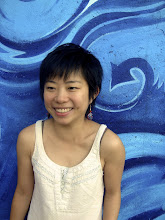Michael wrote to CoCo 9:11am, 17 May 2009:
And what it says about our perceptions of the body, our expectations and rules for it. And how quickly we take cues and prescriptions for ourselves from the other bodies we encounter. I felt like it revealed something so fragile: maybe the choreography of identity? Maybe when you develop a research interest you begin to see it everywhere, but it was something like that. Up until their encounter with you, the others in the space knew the “rules” and they were playing by them! That’s maybe the crux of this connection is that it revealed some layer of awareness or intentionality of the ways in which these other individuals were handling themselves in their bodies, the way they were choreographing their actions to fit within their understanding of the “rules,” and by encountering you/your dancing body, their understanding of the rule, and thus their “choreography,” was called into question. So fragile.
It made me think of something Bill Forsythe said about the thought behind “Monster Partitur” and the whole exhibition at the Wex. He talked about how in the art gallery culture, their is a certain “viewer agency” to meander, to wander, to direct attention for whatever duration, to come in, to leave, etc. And in the dance world, we tend to hold our viewers captive. They come in, they sit down, we turn out the lights, and for the most part, they are expected to STAY. He was interested in moving dance into the gallery space to potentially explore this viewer relationship. it raises questions like, “Dance, unlike a static object, literally changes and unfolds over time. How does its meaning or relevance shift if the viewer can come in or exit an encounter with it at any point? How is its value effected if they don’t see the ‘beginning’ or the ‘end’, only some piece in the ‘middle’?” I felt that “The Runner” leant itself to this way of viewing remarkably well. There is something about the piece, how it moves from one thing to the next with very little through-line, how each moment it partially characterized by the total abandonment of the previous moment, that gives immense permission to see/encounter only a part of it. I felt like I was fully engaged with the piece for its duration, but by the end I could not begin to describe the sequence of events, or even recount all of the events that had transpired. Just as it seemed as if you moved from moment to moment, event to event, with a total abandonment of what came before, I felt that I was invited to do the same. Which seems to relate much more to that “gallery, come and go as you please” mentality than to the proscenium “come in, watch from beginning to end, then leave” way of engagement. In that sense, I commend you hugely. I think Agora was a perfect match for the piece. I think I would also love to see it in the Wex, either in a gallery or outside on that quad . . . something about framing it in the manner of engagement associated with gallery/museum spaces that I described above. I think that is a fascinating connection between the context and content of the piece.
I don't really know who this Michael is and have not seen the piece, but this conversation, and my subsequent reading of Deborah Hay's writings on her website certainly provoked my thinking about what is dance, and the importance of developing an active awareness of the possible ways we can execute movements in different bodies as "houses," and their contexts as the external architecture of the houses.





No comments:
Post a Comment